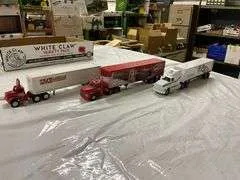What are Diecast Trailers
Diecast trailers are miniature replicas of real-life semi-trailer trucks, meticulously crafted for collectors and enthusiasts alike. These models are typically made using the die-casting process, which involves injecting molten metal, often zinc alloy, into molds to create highly detailed and accurate representations. Diecast trailers capture the essence of their full-size counterparts, offering a tangible way to appreciate the design and engineering of these essential vehicles. They are not just toys; they are miniature works of art, embodying the passion of those who collect them and the dedication of those who create them. The popularity of these models spans across generations, captivating both young and old with their intricate designs and realistic features.
Materials Used in Diecast Trailers
The materials used in diecast trailers play a crucial role in their durability, detail, and overall aesthetic appeal. The primary material is typically a zinc alloy, often combined with other metals like aluminum or copper to enhance strength and provide specific properties. These alloys are ideal for die-casting due to their ability to capture fine details and withstand wear and tear. Plastic components are also common, particularly for parts that require flexibility or specific textures, such as tires, mud flaps, and some interior elements. Paint and decals are applied with precision to replicate the colors, markings, and logos of real-world trailers. Each material is carefully selected to contribute to the authenticity and longevity of these miniature masterpieces. These are what make diecast trailers so unique, and so enjoyable to collect.
Types of Diecast Trailers Available

The world of diecast trailers offers a diverse array of models, reflecting the wide variety of trailers used in the transportation industry. Collectors can find replicas of nearly every type of trailer imaginable, each with its unique design and purpose. From the simple yet versatile flatbed to the specialized reefer and lowboy trailers, the selection caters to different interests and allows enthusiasts to build comprehensive collections. The different types allow for many opportunities to explore the different ways that trailers are utilized within different industries. The types vary from open trailers to enclosed trailers. The details add to the realistic feel of the models.
Flatbed Trailers
Flatbed trailers are the workhorses of the transportation industry, designed to haul a vast range of cargo. These trailers feature a flat, open deck, making them ideal for transporting oversized or irregularly shaped items that cannot be easily accommodated in enclosed trailers. Diecast models of flatbed trailers often replicate the detailed deck, securing points, and other features accurately. This type of trailer is a favorite of diecast collectors because of its flexibility. Many different items can be hauled on a flatbed trailer, which makes it a great option for collectors to feature different items to showcase.
Reefer Trailers
Reefer trailers, short for refrigerated trailers, are essential for transporting temperature-sensitive goods such as food and pharmaceuticals. These trailers are equipped with cooling systems to maintain specific temperature ranges, ensuring the integrity of the cargo during transit. Diecast models of reefer trailers often showcase the distinctive features of the refrigeration unit and the insulated body of the trailer. This type of trailer is particularly popular among collectors who have a special interest in the food and pharmaceutical industries. The details that go into these models are what make them unique.
Lowboy Trailers
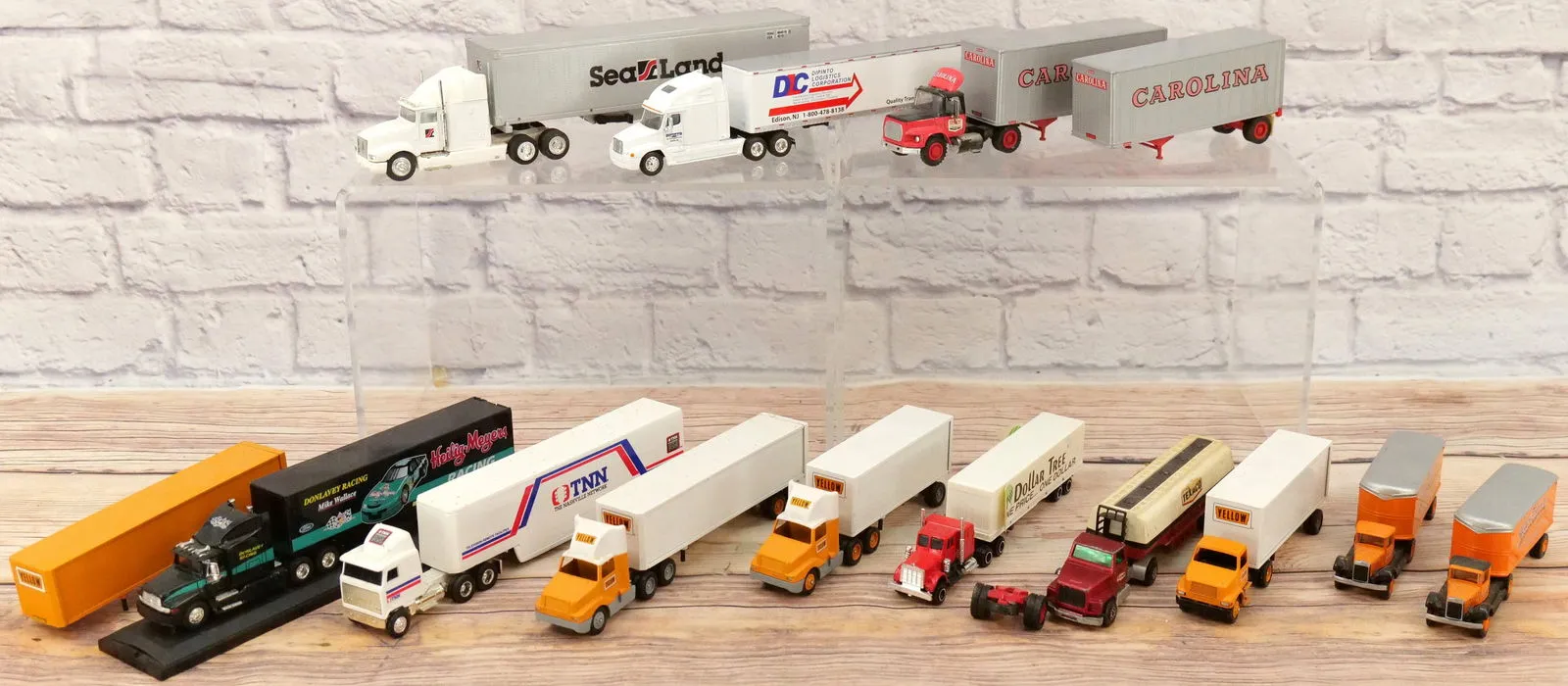
Lowboy trailers are designed to haul heavy equipment and oversized loads that require a lower center of gravity. These trailers have a significantly lower deck height compared to standard trailers, providing stability and allowing for the transport of tall items. Diecast models of lowboy trailers often feature detailed ramps, axles, and other components that contribute to their realistic appearance. The low profile of these trailers makes them a popular choice for collectors who are interested in construction equipment and other specialized cargo. These models are made with the highest levels of attention to detail.
Key Features to Look For in Diecast Trailers
When selecting diecast trailers, several key features can help determine the quality and value of the model. Assessing these features helps enthusiasts make informed choices and build collections that reflect their preferences. The attention to detail, the materials used, and the overall realism are the main indicators of the quality of the model. Each of these elements has the power to elevate the model into a fantastic piece of work.
Scale and Size
Scale is a critical factor in diecast trailers, as it determines the size and proportion of the model. Common scales include 1:50, 1:64, and 1:87, each offering a different level of detail and suitability for various display setups. Considering the scale of the model in relation to existing collections and available display space is essential. Choosing the right scale ensures that the models fit well within the overall collection and creates a cohesive visual experience. Some people opt for smaller scales to display more models in a smaller space.
Detailing and Realism
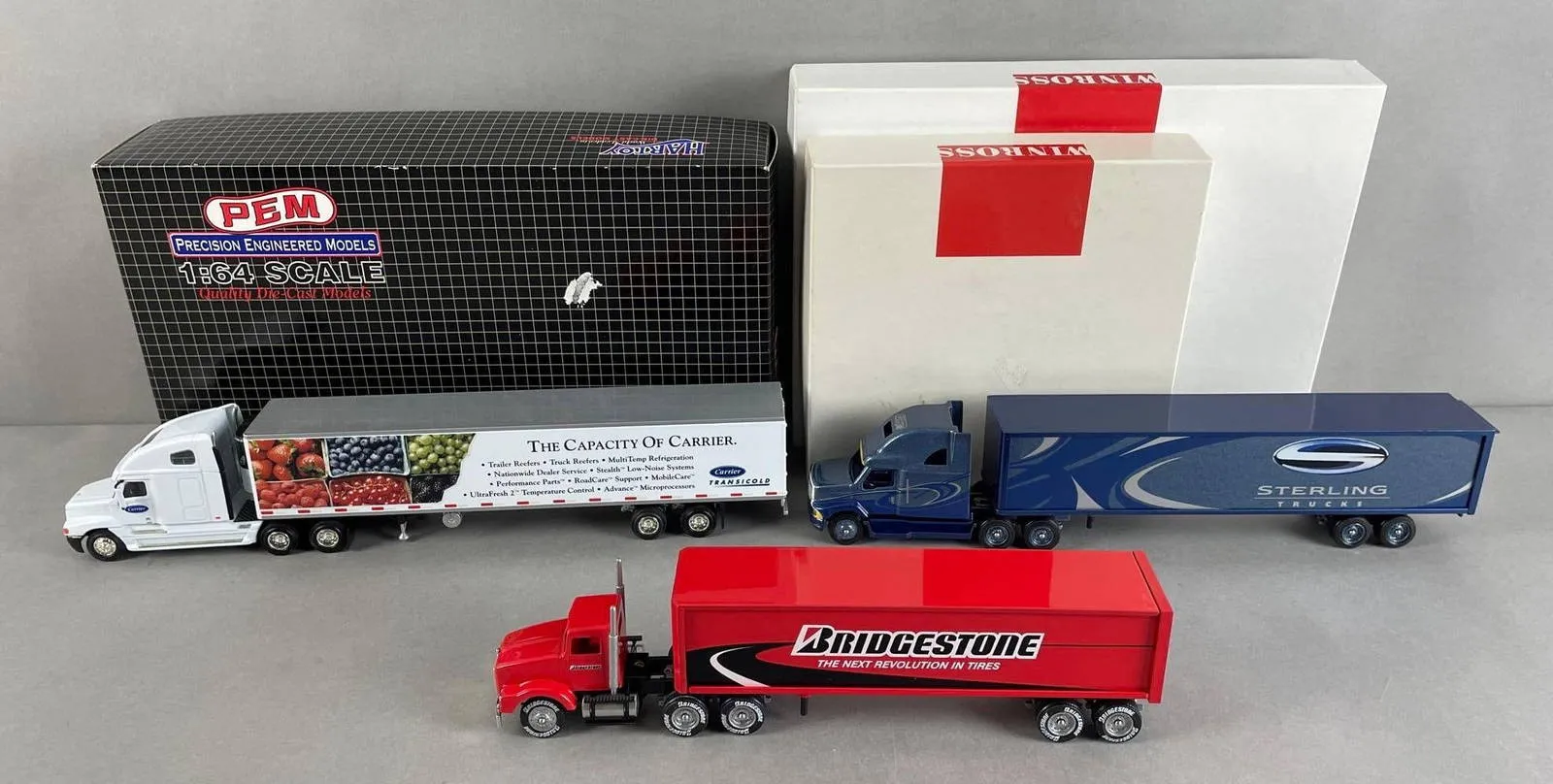
The level of detail and realism is a key indicator of a diecast trailer’s quality. High-quality models feature intricate details such as accurately replicated logos, paint schemes, and operational features. The more realistic the model, the more valuable it is likely to be. Examine the model closely, looking for realistic features. Pay attention to the precision of the paintwork, the sharpness of the decals, and the overall accuracy of the model. These details contribute to the model’s overall authenticity and enhance its appeal to collectors. When the model appears authentic, it becomes a fantastic piece.
Durability and Materials
The durability and materials used in a diecast trailer are essential for ensuring its longevity and value. High-quality models are typically made from durable materials. The choice of materials affects the overall realism. Check the construction of the model, paying attention to the quality of the die-cast metal and the precision of the assembly. Durable models can withstand handling and display for many years to come. The ability to withstand many years of use also adds value to the piece.
Collecting and Displaying Diecast Trailers
Collecting and displaying diecast trailers can be a rewarding hobby, allowing enthusiasts to showcase their passion for transportation and model-making. Setting up a display allows collectors to enjoy their collection in a creative and organized manner. Careful planning and attention to detail are key to creating a visually appealing and informative display. The display should also be easy to update and maintain as the collection grows. These are great ways to show off the collection and give people a peek into your passion.
Display Options
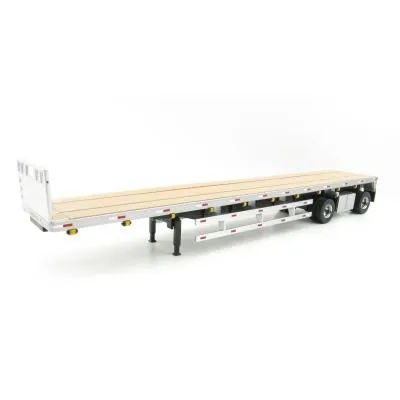
Various display options can be used to showcase diecast trailers, including display cases, shelves, and custom-built dioramas. Display cases are ideal for protecting models from dust and damage while providing a clear view of the collection. Shelves are a great option for creating a more open and accessible display. Custom dioramas allow collectors to create realistic scenes, adding context and depth to the display. The display option should reflect the scale and theme of the collection. A great display showcases your unique collection in a way that makes the models stand out.
Storage Solutions
Proper storage is essential for protecting diecast trailers when they are not on display. Using specialized storage boxes or containers can prevent dust accumulation and minimize the risk of damage. Storing models in a cool, dry place away from direct sunlight helps preserve their condition. Organizing the storage area allows for easy access to individual models and simplifies the process of rotating the collection. Storing the models ensures that they remain in good condition for years to come.
Caring for Your Collection
Maintaining diecast trailers is crucial for preserving their value and extending their lifespan. Regular cleaning, proper storage, and careful handling are essential practices for ensuring that the models remain in excellent condition. The right care allows collectors to enjoy their collection for many years to come. The models can be great investments when taken care of properly.
Cleaning and Maintenance
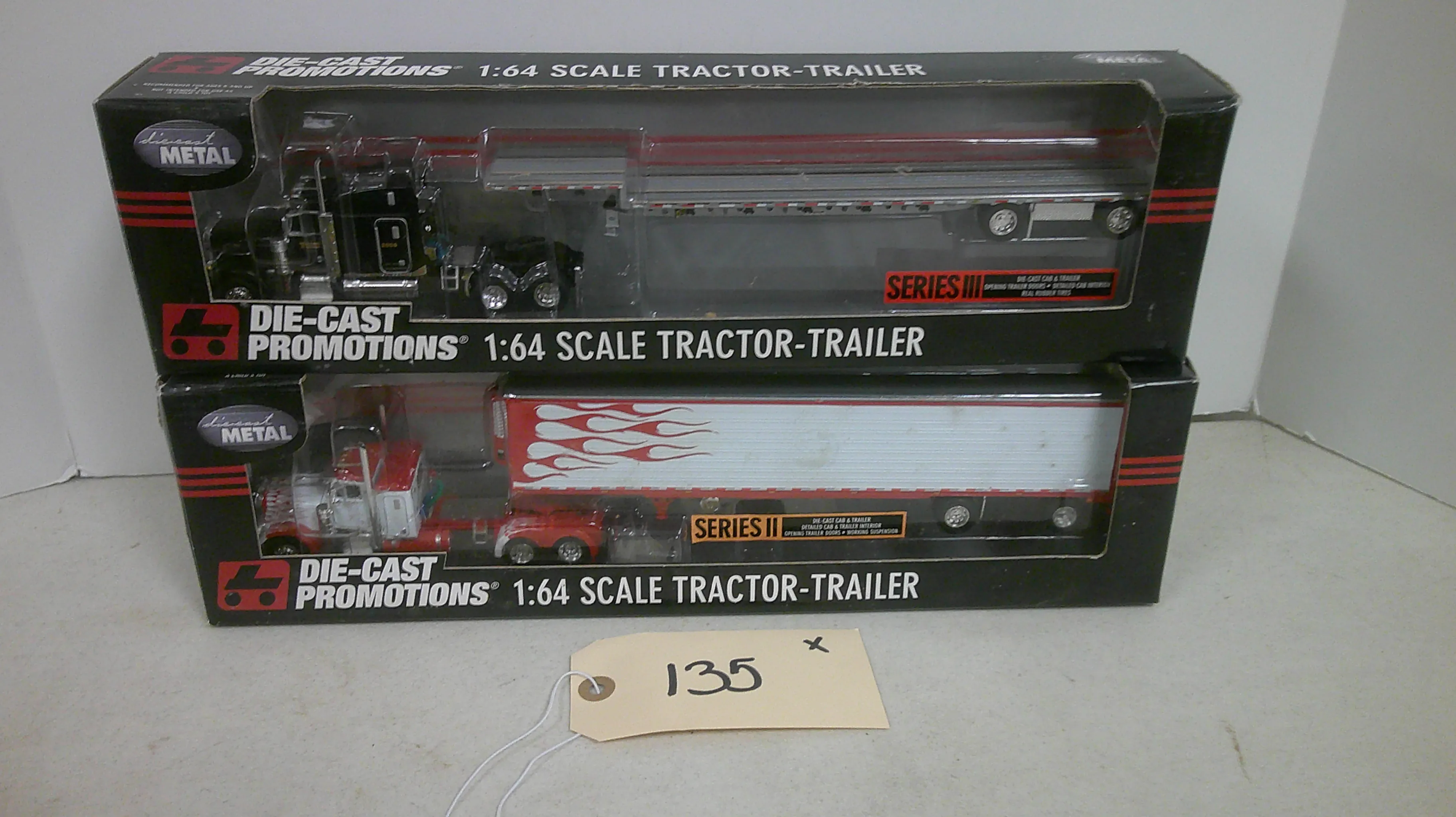
Cleaning diecast trailers regularly helps remove dust and dirt, preserving their appearance. Use a soft cloth or brush to gently wipe away dust and grime. Avoid using harsh chemicals or abrasive cleaners that could damage the paint or decals. Inspecting the models regularly for any signs of damage or wear and tear allows for prompt repairs. Following this plan ensures that the models remain in excellent condition.
Preventing Damage
Preventing damage is vital for preserving the value of diecast trailers. Store models in a safe place, away from direct sunlight and extreme temperatures, to prevent fading or warping. Handle the models with care to avoid scratches or dents. Consider using protective cases or display cases to minimize the risk of accidental damage. Taking proactive steps to prevent damage ensures that the models remain in pristine condition for many years to come.
In conclusion, diecast trailers offer a fascinating world of miniature replicas, providing collectors with a unique way to appreciate transportation history and model-making craftsmanship. From understanding the types of trailers to caring for your collection, this guide has covered the key aspects of this engaging hobby. Whether you are a seasoned collector or just starting, the world of diecast trailers has something for everyone. So, start your collection today, and enjoy the journey!
